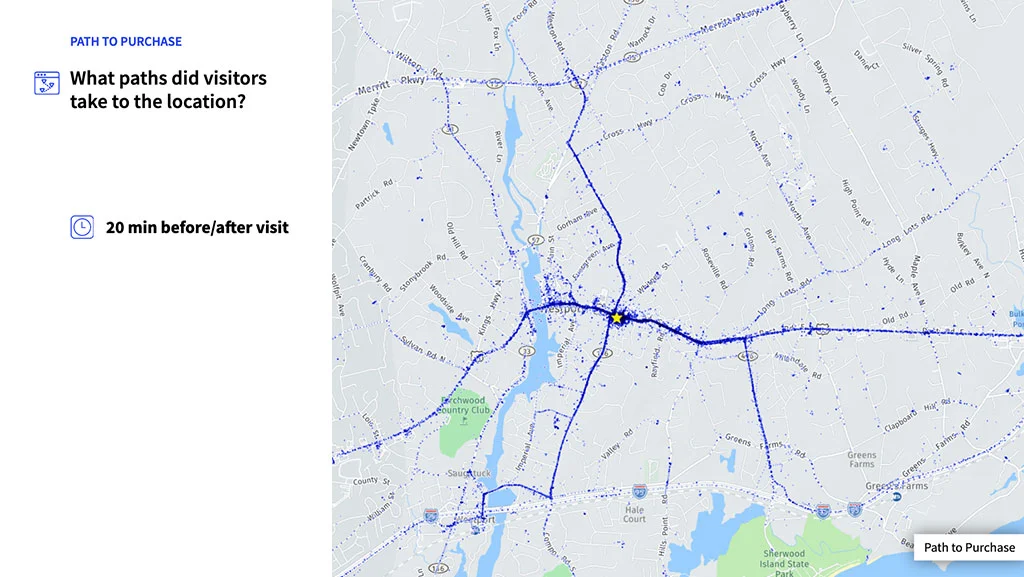Key Insights:
Challenge:
The QSR wanted to assess the viability of a prospective site for a new location based on customer demographics and behavior.
The QSR needed to to define the trade area and understand where customers were coming from, including commute patterns.
The QSR required insights into the demographic and affinity profile of customers visiting the site.
Results at Glance:
Broad Reach: Found that the location attracted a wide customer base from southwest Connecticut, particularly from affluent families.
Demographic Fit: Identified that the customer profile was predominantly educated and wealthy, which aligned with the QSR’s target market.
Informed Decision-Making: Enabled the client to confidently determine that the site’s demographic was a strong fit for their business.
Solution:
The QSR leveraged Azira for:
Comprehensive Reports: Used reports like the Optimal GeoSpace, Pathing X, and Common Daytime Location to understand the site’s trade area, customer locations, and travel patterns.
Demographic and Affinity Data: Leveraged data on customer demographics and affinities to other upscale brands to build a clear picture of the target audience.
Mobile Location Data: Mobile location data helped identify the geographic spread and behaviors of customers, offering actionable insights for location planning.
Table of Contents
Background

Reports used:
- Common Evening Location Common Daytime Location Distance Report
- Optimal GeoSpace Report
- Pathing X Report
- Demographics Report
- Location Affinity Report
Where do Customers to this Study Location Live and Work?

The smaller median CDL (common daytime, ie likely work location) distance indicates customers work closer than they live to the study site.

Where are Customers Coming From and What is the Study Location’s Trade Area?

The Optimal GeoSpace for this location sits on the same roads, but gives a more definition to the range from which this location draws most of its customers.

What are the Customers’ Demographics?

What are the Customers’ Affinities to Other Locations?



